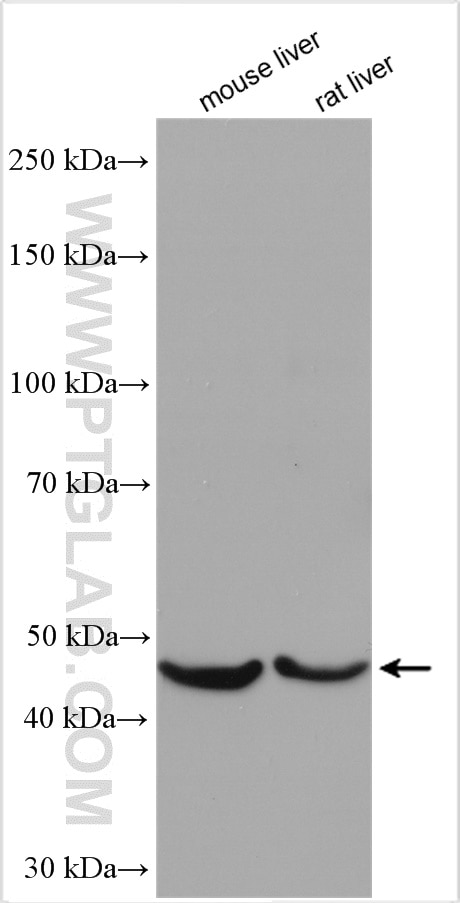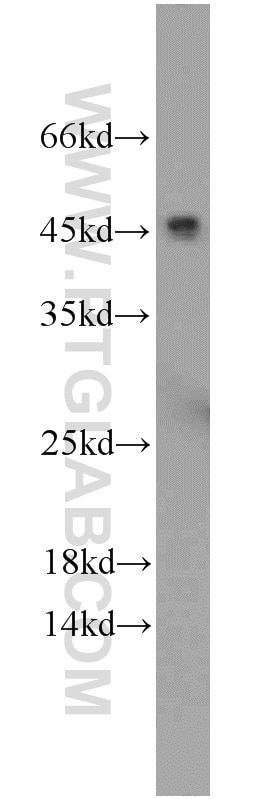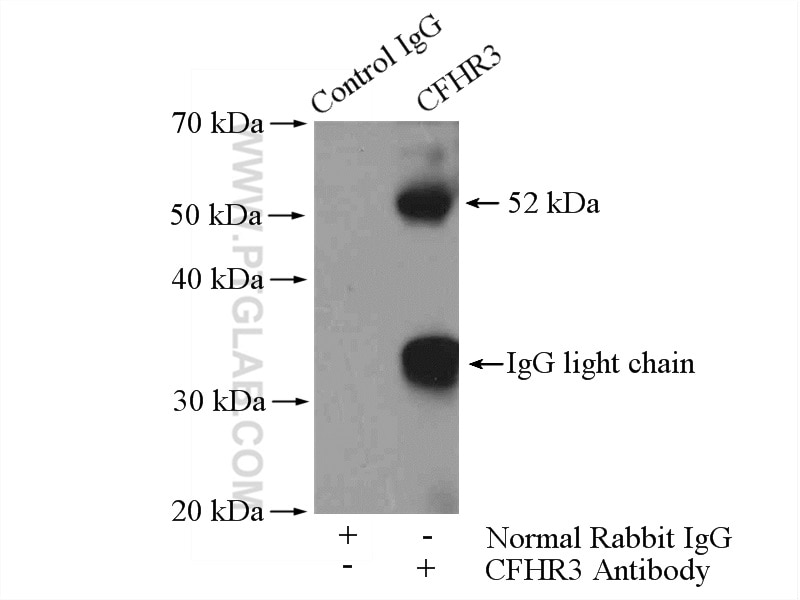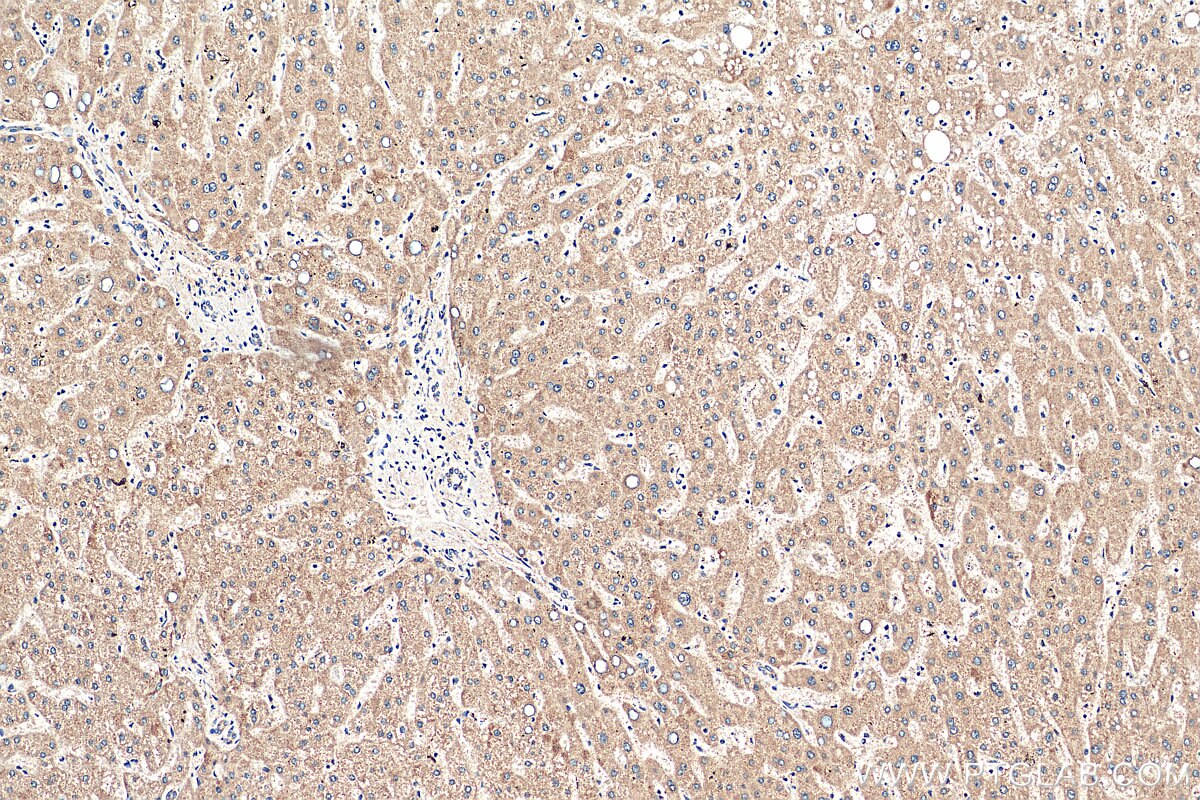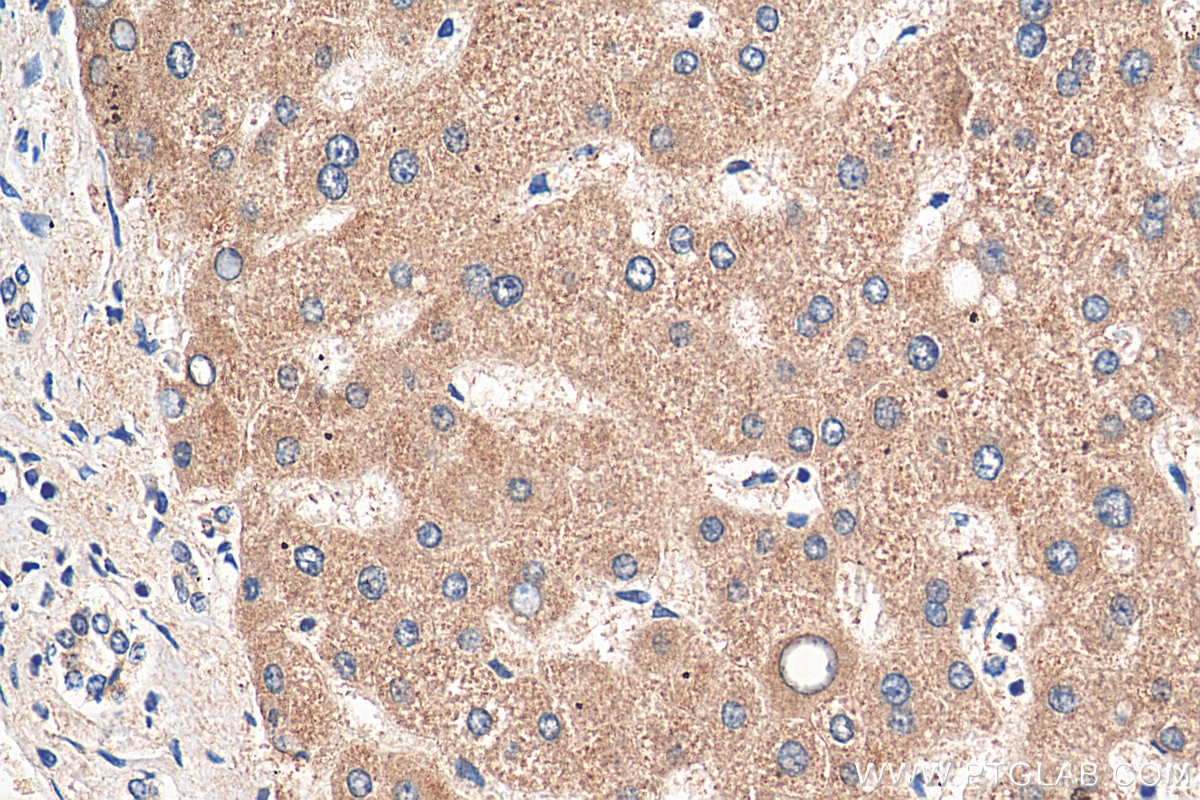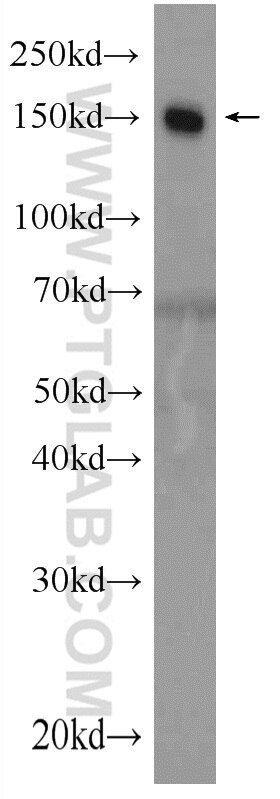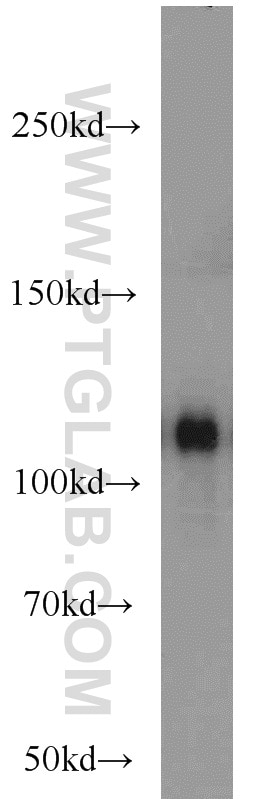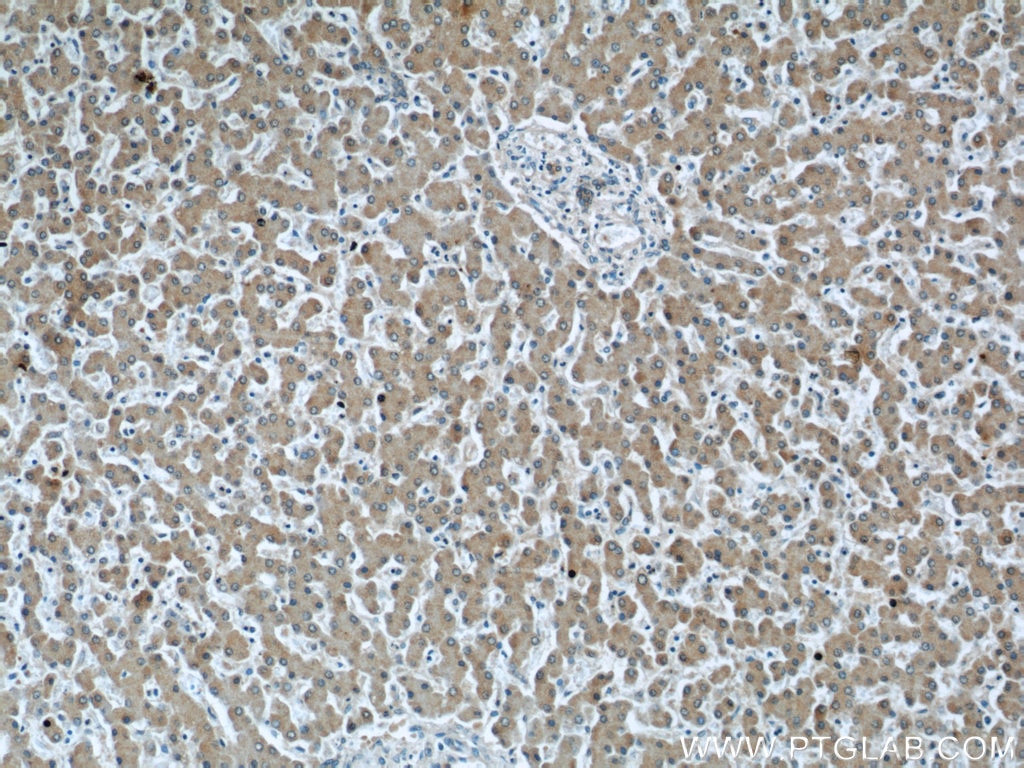CFHR3 Polyklonaler Antikörper
CFHR3 Polyklonal Antikörper für IHC, IP, WB, ELISA
Wirt / Isotyp
Kaninchen / IgG
Getestete Reaktivität
human, Maus, Ratte
Anwendung
WB, IP, IHC, IF, ELISA
Konjugation
Unkonjugiert
Kat-Nr. : 16583-1-AP
Synonyme
Galerie der Validierungsdaten
Geprüfte Anwendungen
| Erfolgreiche Detektion in WB | Mauslebergewebe, humanes Herzgewebe, Rattenlebergewebe |
| Erfolgreiche IP | HepG2-Zellen |
| Erfolgreiche Detektion in IHC | humanes Lebergewebe Hinweis: Antigendemaskierung mit TE-Puffer pH 9,0 empfohlen. (*) Wahlweise kann die Antigendemaskierung auch mit Citratpuffer pH 6,0 erfolgen. |
Empfohlene Verdünnung
| Anwendung | Verdünnung |
|---|---|
| Western Blot (WB) | WB : 1:1000-1:4000 |
| Immunpräzipitation (IP) | IP : 0.5-4.0 ug for 1.0-3.0 mg of total protein lysate |
| Immunhistochemie (IHC) | IHC : 1:50-1:500 |
| It is recommended that this reagent should be titrated in each testing system to obtain optimal results. | |
| Sample-dependent, check data in validation data gallery | |
Veröffentlichte Anwendungen
| WB | See 5 publications below |
| IHC | See 1 publications below |
| IF | See 1 publications below |
Produktinformation
16583-1-AP bindet in WB, IP, IHC, IF, ELISA CFHR3 und zeigt Reaktivität mit human, Maus, Ratten
| Getestete Reaktivität | human, Maus, Ratte |
| In Publikationen genannte Reaktivität | human |
| Wirt / Isotyp | Kaninchen / IgG |
| Klonalität | Polyklonal |
| Typ | Antikörper |
| Immunogen | CFHR3 fusion protein Ag9963 |
| Vollständiger Name | complement factor H-related 3 |
| Berechnetes Molekulargewicht | 330 aa, 37 kDa |
| Beobachtetes Molekulargewicht | 45-56 kDa |
| GenBank-Zugangsnummer | BC058009 |
| Gene symbol | CFHR3 |
| Gene ID (NCBI) | 10878 |
| Konjugation | Unkonjugiert |
| Form | Liquid |
| Reinigungsmethode | Antigen-Affinitätsreinigung |
| Lagerungspuffer | PBS mit 0.02% Natriumazid und 50% Glycerin pH 7.3. |
| Lagerungsbedingungen | Bei -20°C lagern. Nach dem Versand ein Jahr lang stabil Aliquotieren ist bei -20oC Lagerung nicht notwendig. 20ul Größen enthalten 0,1% BSA. |
Hintergrundinformationen
CFHR3, also named as DOWN16, belongs to the complement factor H-related protein family. Expressed by the liver and secreted in plasma, human CFHR3 is composed of five short consensus repeats (SCRs), and it also has a 19-amino acid signal peptide and four N-linked glycosylation sites. It may be involved in complement regulation. Deletion of CFHR1 and CFHR3 genes was found to be associated with decreased risk of age-related macular degeneration (AMD), and with an increased risk of atypical hemolytic-uremic syndrome (aHUS).
Protokolle
| Produktspezifische Protokolle | |
|---|---|
| WB protocol for CFHR3 antibody 16583-1-AP | Protokoll herunterladen |
| IHC protocol for CFHR3 antibody 16583-1-AP | Protokoll herunterladen |
| IP protocol for CFHR3 antibody 16583-1-AP | Protokoll herunterladen |
| Standard-Protokolle | |
|---|---|
| Klicken Sie hier, um unsere Standardprotokolle anzuzeigen |
Publikationen
| Species | Application | Title |
|---|---|---|
Clin Cancer Res Complement regulatory proteins CFHR1 and CFHR3 and patient response to anti-CD20 monoclonal antibody therapy. | ||
Sci Rep A haplotype in CFH family genes confers high risk of rare glomerular nephropathies. | ||
Exp Eye Res Quantitative analysis of hydroxyapatite-binding plasma proteins in genotyped individuals with late-stage age-related macular degeneration. | ||
PLoS One A novel quantitative hemolytic assay coupled with restriction fragment length polymorphisms analysis enabled early diagnosis of atypical hemolytic uremic syndrome and identified unique predisposing mutations in Japan. | ||
Bioengineered A novel hypoxia-driven gene signature that can predict the prognosis of hepatocellular carcinoma. | ||
Mol Med Rep Complement factor H‑related 3 overexpression affects hepatocellular carcinoma proliferation and apoptosis. |
